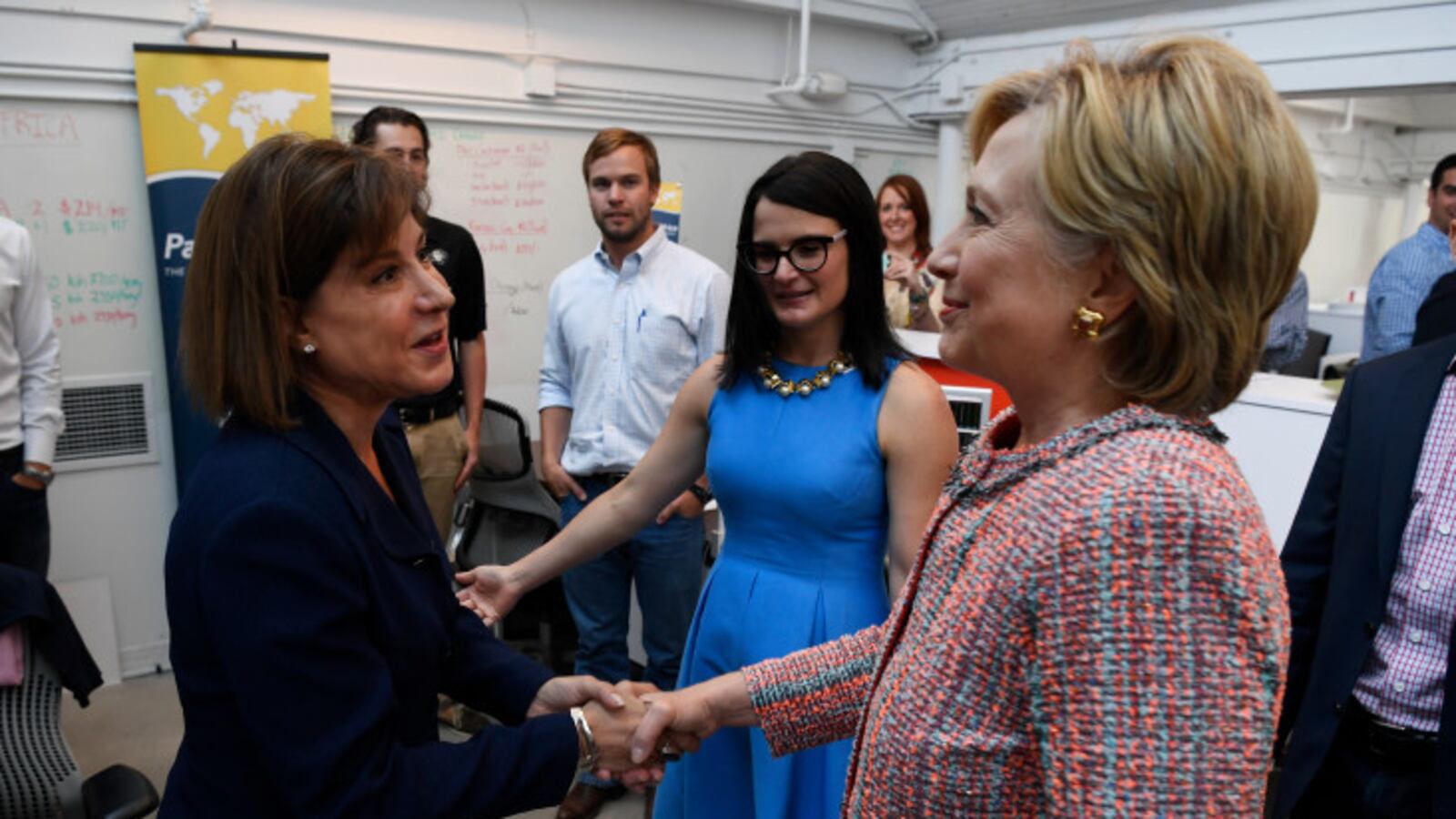During a campaign swing Tuesday through Denver, presumptive Democratic presidential nominee Hillary Clinton rolled out a technology and innovation platform that includes greater investments in Science, Technology, Engineering and Math, or STEM, education.
In a visit to the Galvanize tech training and co-working space, Clinton stressed a commitment to ensuring that “every student in America — no matter what ZIP code that student lives in — gets the chance to learn computer science before they graduate high school.”
Here are a few K-12 specifics from Clinton’s Initiative on Technology and Innovation, which you can read in full here.
- Clinton proposes building on the Obama administration’s “Computer Science Education for All” initiative, doubling the investment in the government’s $120 million Investing in Innovation (i3) program, including a 50 percent set-aside for computer science education. The idea is to support efforts to scale successful instruction and lesson programs.
- Another initiative would seek to expand the pool of computer science teachers through recruiting new teachers and giving more training to existing ones, with the goal of creating an additional 50,000 teachers in the field over the next decade. To pay for it, her administration would commit federal financial aid, assistant to professional development programs and support for private-public partnerships.
- The Clinton Education Department would provide grants to support states, cities and charter schools on a number of initiatives. Among those mentioned were developing innovative schools, redesigning high schools to focus more on STEM, building higher education and private sector partnerships, and supporting so-called “makerspaces.” Denver’s DSST charter school network, in the midst of a significant expansion, gets a shoutout in the Clinton plan as a model of innovation.
Of course, proposals are just that and often run into political and financial headwinds. As Education Week noted, it’s unclear whether expanding the i3 grant program — now overhauled and called Education Innovation and Research grants under the nation’s new education law, the Every Student Succeeds Act — will find favor with Congress.
Making computer science courses available to all is an ambitious goal.
Though nine in 10 parents want their children to learn computer science, just one in four schools teach it, according to Code.org, a nonprofit advocating for expanding access to computer science, especially for young women and minority students. (The organization has worked with Denver Public Schools and the Douglas County School District).
New York City is working on a plan to eventually give all students access to computer science education. Earlier this month, officials there announced an expansion of the program to elementary schools.
In Colorado, a number of efforts are underway to promote increased STEM and computer science opportunities.
The Longmont-based St. Vrain Valley District is considered a leader in STEM education. The district has won both an i3 grant and $16.6 million in Race to the Top money for initiatives primarily serving low-income students of color.
The district has focused significant effort on Skyline High School — where it established a STEM academy — and its feeder schools. Skyline is home to one of the state’s first Pathways to Technology and Early College (P-TECH) schools, which was made possible by a 2015 state law and involves a partnership with IBM and Front Range Community College.
Students graduate with both a high school diploma and an industry-recognized associate degree, gaining job skills along the way.
“We really felt like we could break the cycle of poverty, and also allow students to have a very focused career path,” said Patty Quinones, the district’s assistant superintendent of innovation.
Most Colorado students don’t get those kind of opportunities. And racial and economic disparities are jarring.
Consider one yardstick — Advanced Placement courses and exams in computer science, one piece of STEM:
- Just 661 Colorado high school students took the Advanced Placement computer science exam in 2014-15. Only 57 were Hispanic and only 18 were black. More than 80 percent of the students who took the exam were boys.
- Just 55 schools — or 15 percent of Colorado schools with AP programs — offered the AP Computer Science course in 2014-15.
One legislative effort to advance computer science opportunities in Colorado fell short this year. House Bill 1291 would have added technology skills to the state’s existing content standards and provided grants for educators seeking additional training in computer science, among other things. The bill died in a Senate committee in the session’s waning days.
Scott Laband, president of Colorado Succeeds, an education-focused business group that backed the legislation, said a similar effort is likely to return next year.
Laband said efforts to bolster STEM and computer science ought to create multiple pathways for students, recognize the value of internships and apprenticeships, and inspire students to envision bright futures.
“We always talk about, ‘You cannot be what you cannot see,'” he said.


